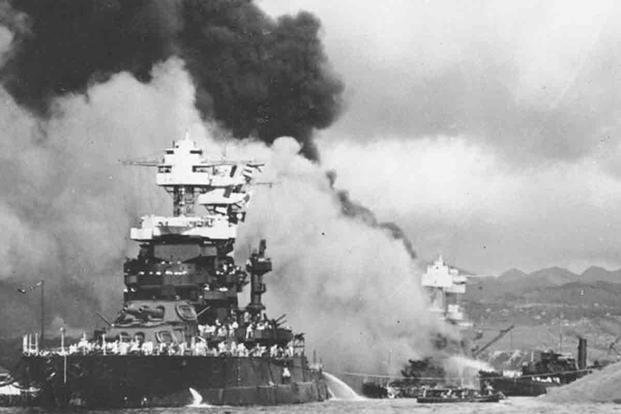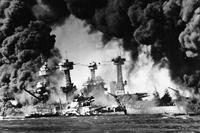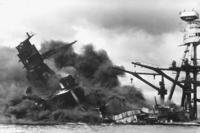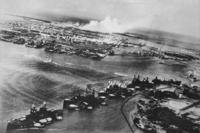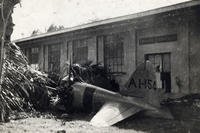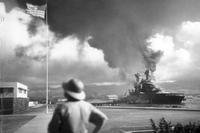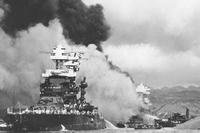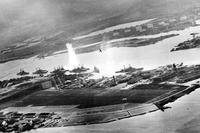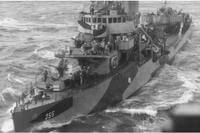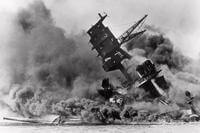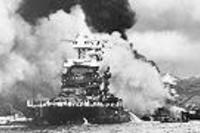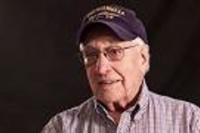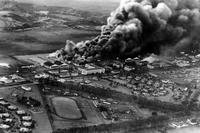It should have been a wakeup call for the Navy -- and Pearl Harbor, in particular.
When the first two attacks on Pearl Harbor took place, the Imperial Japanese Navy was taking notes. Japanese spies in Oahu watched as American planes hit the island from over the Koolau Range, and they sent the information back to Japan. Nine years later, the attackers came from Japan, and they dropped real bombs.
In February 1932, the debate over the future of air power in modern combat was still in full swing. Rear Adm. Harry Yarnell was a believer in the power of the airplane, and he set out to prove its value to the Navy.
The Navy had three aircraft carriers at the time, but deemed them to have little strategic value. The battleship was still the primary figure for naval war planning, as naval warfare was considered to be a slugfest at sea, while naval aviation was given more of a patrol and reconnaissance mission.
Yarnell devised a plan that would show what aircraft could do to any naval installation anywhere. When Pearl Harbor began its yearly defense exercise, it was Yarnell and his planes who were the aggressors. He chose a Sunday morning in February to launch his surprise and hit the naval base early in the morning to catch its defenders unprepared.
Sailing with just two carriers and a handful of destroyer escorts, Yarnell's task force approached Oahu in thick fog and in the dead of night. His 152 aircraft launched just before dawn in the morning twilight. When day came, the planes appeared over the base from the Koolau Range, striking aircraft on the ground and bombarding the ships in the harbor.
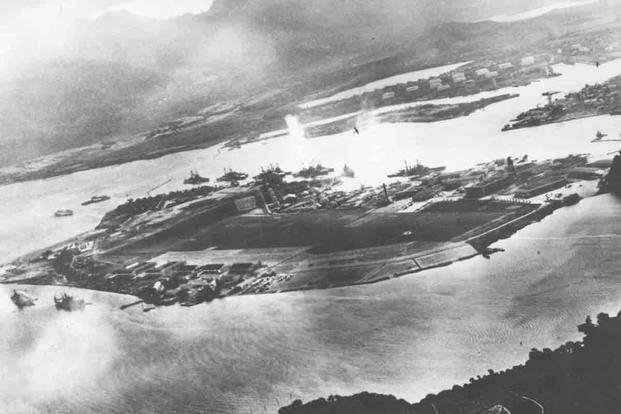
The admiral's plan went off without a hitch or a casualty. The base itself was strewn with dead flares and sacks of flour, the weapon of choice for the attacking aircraft. It was the first time Pearl Harbor had lost this annual war game.
The Navy cried foul and declared the exercise illegal, stating that it would have been on alert if the country were actually at war. It also said that a fleet like Yarnell's would have been exposed and damaged or destroyed in case of such an attack.
So it went until 1938, when the annual exercise was held again that year. This time, Adm. Ernest King was in command of the opposing forces. Yarnell was watching King's movements closely this second time around.
King took one aircraft carrier and its escort destroyers on a similar route and time. Just like the first exercise, the attacking aircraft came from the Koolau Range and decimated the fleet at Pearl Harbor. And just like the first attack, the Navy claimed the tactic was unfair and vetoed the results. Nothing changed.
Unlike the U.S. Navy, the Imperial Japanese Navy took notice of the first exercise. It watched the1932 attack and studied it closely. Japanese Adm. Isoroku Yamamoto was also a believer in naval air power and structured the Japanese Navy to focus on aircraft carriers.
When it came time for Japan to attack the United States, it knew that a long-term war with a potential industrial powerhouse was not one it could win. The Japanese hoped that by knocking out the U.S. Pacific Fleet, it could keep the Americans out of the war permanently.
Japan attacked Pearl Harbor, using much the same plans Yarnell used just nine years prior, only he used six aircraft carriers and 353 aircraft, many of which hit the harbor from the Koolau Range. It came as Japan launched simultaneous attacks on the Philippines, Guam, Wake Island, Malaya, Singapore and Hong Kong.
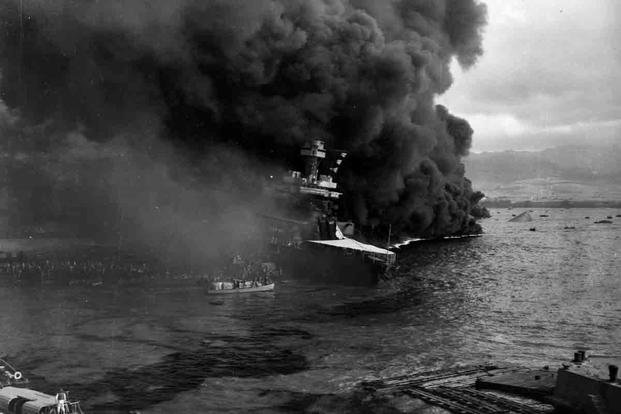
Yamamoto's attack was far from perfect, losing 29 planes and 64 troops, but Japan had succeeded in at least delaying or hampering an immediate American response to Japanese military action in the Pacific.
-- Blake Stilwell can be reached at blake.stilwell@military.com. He can also be found on Twitter @blakestilwell or on Facebook.
Want to Learn More About Military Life?
Whether you're thinking of joining the military, looking for post-military careers or keeping up with military life and benefits, Military.com has you covered. Subscribe to Military.com to have military news, updates and resources delivered directly to your inbox.
